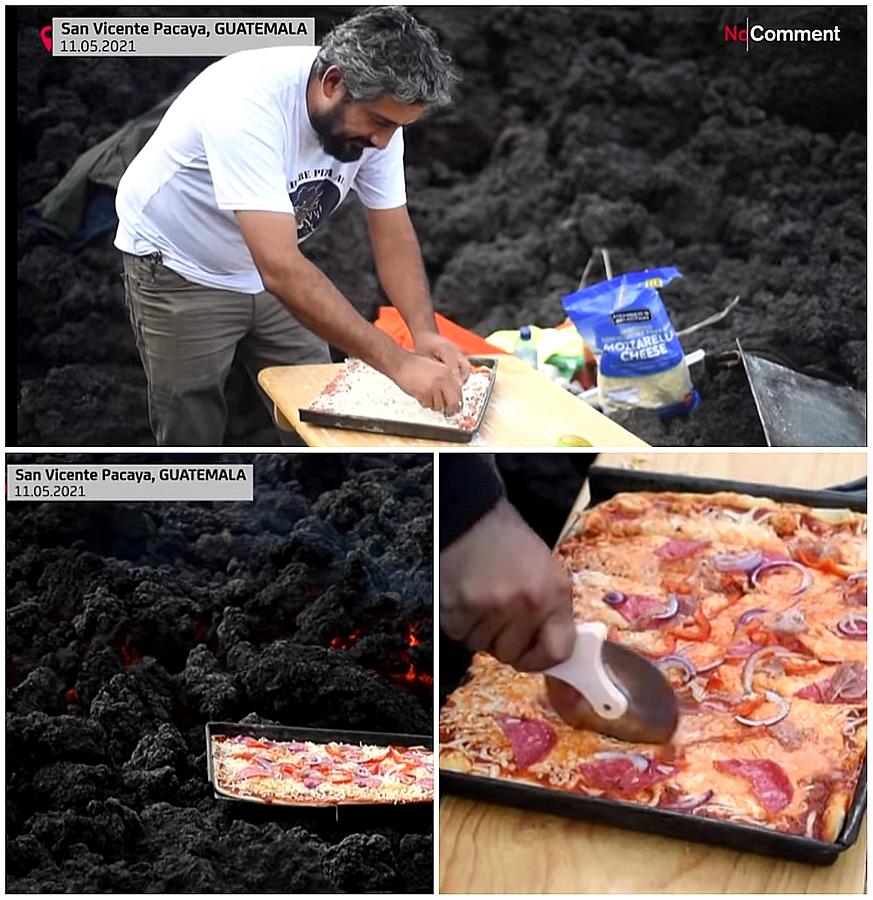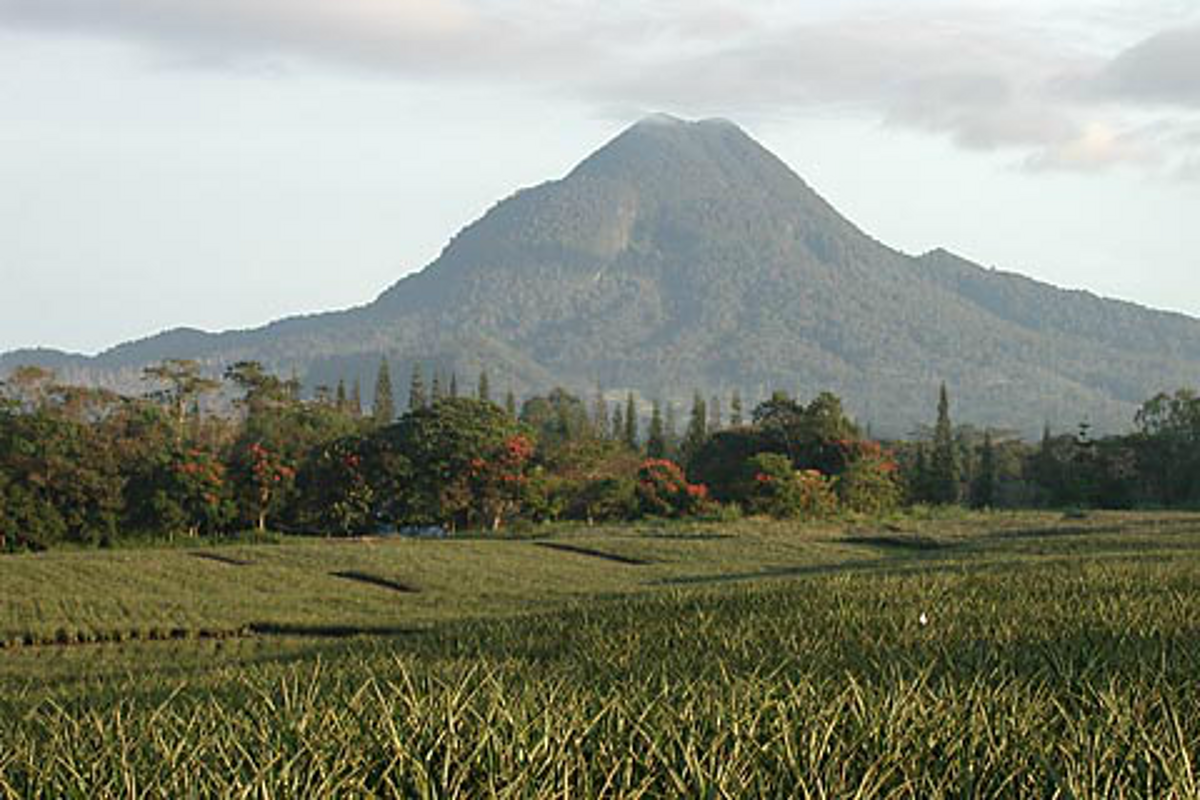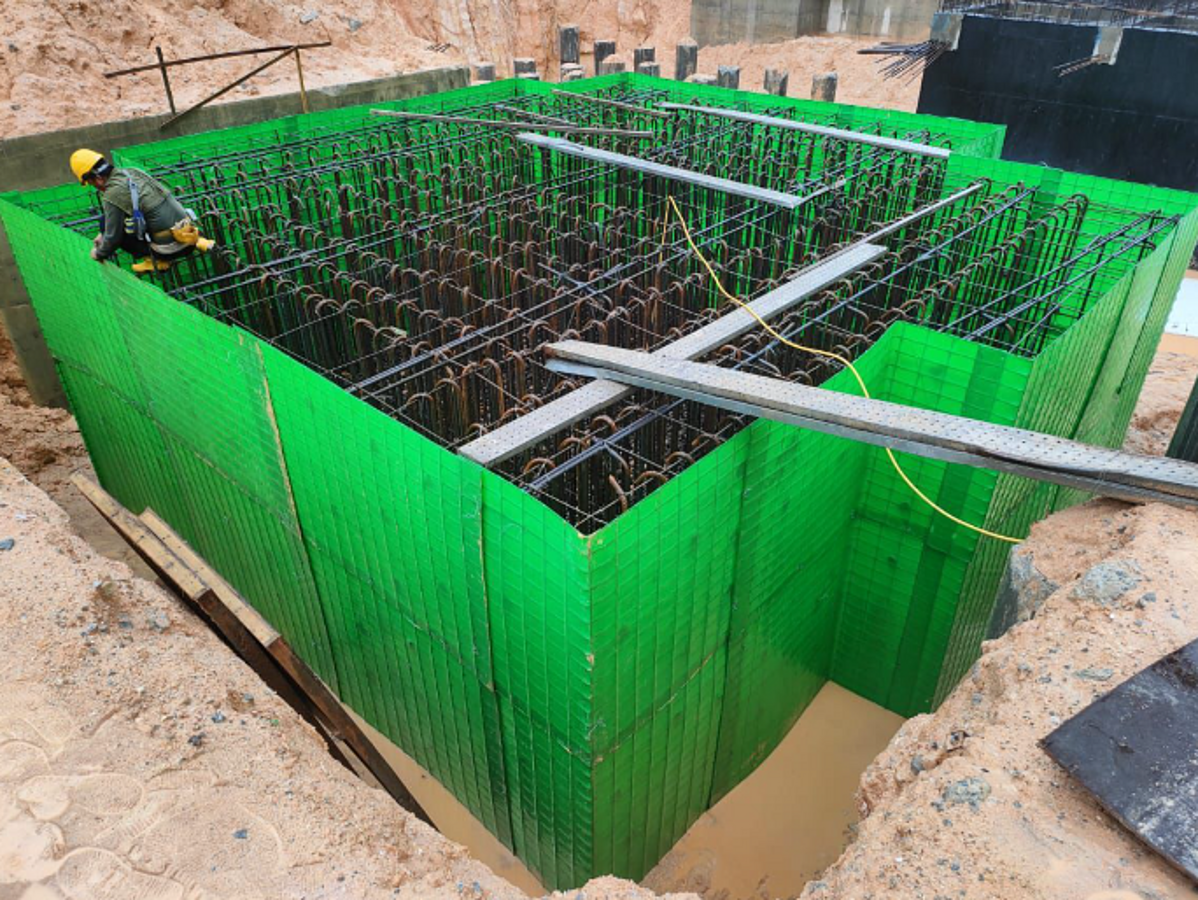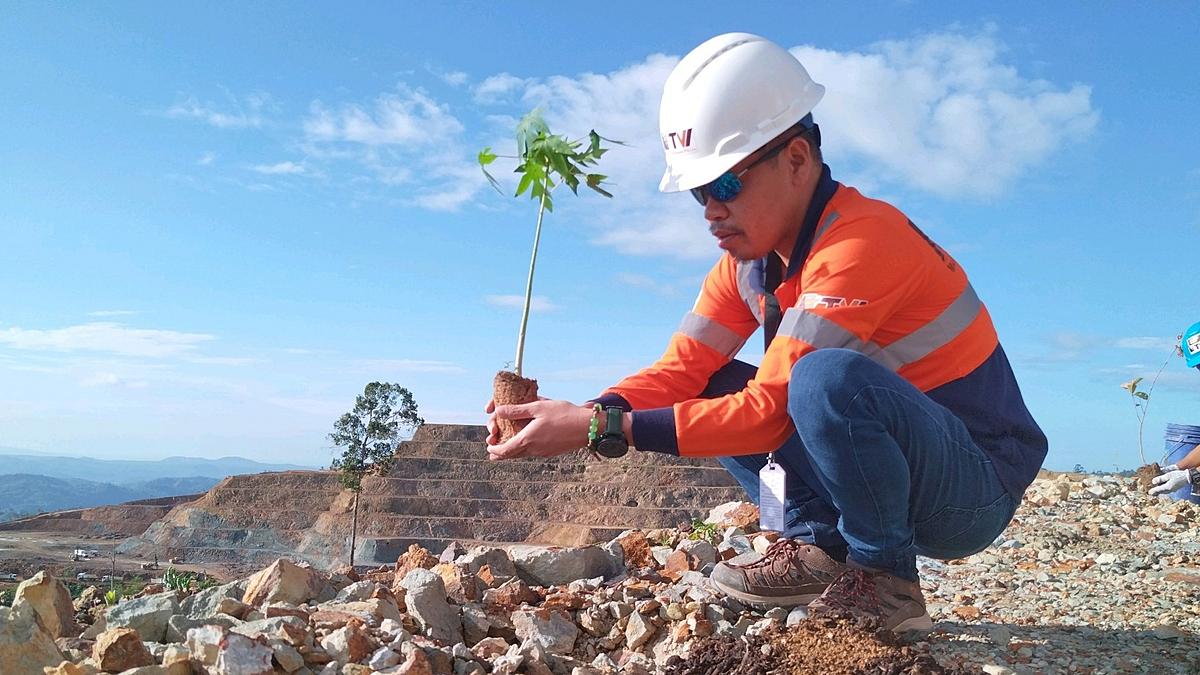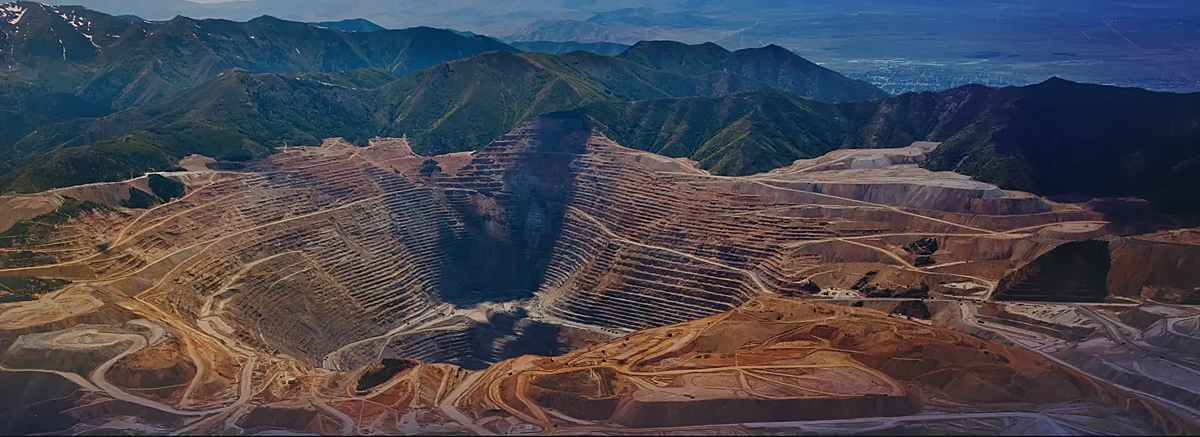[As fiery lava flows from Pacaya Volcano in southern Guatemala, David Garcia bakes pizza in his improvised kitchen. (Photo credit/video screenshots from: EuroNews / NoComment - https://www.youtube.com/watch?v=4nKZ__lWexo)]
In the Philippines, Taal Volcano recently manifested strong volcanic tremors in Batangas which the Philippine Institute of Volcanology and Seismology (PHIVOLCS) declared as Intensity II. This happened last August 12 at 4:36am. While local residents are normally encouraged to evacuate before the volcano’s activity escalates into dangerous levels, in Guatemala, the opposite was done last summer by some tourists.
In an article from “Forbes” online magazine by a freelance geologist and contributing writer, David Bressan, he tells the story of an accountant who cooks pizza using the volcanic heat in Pacaya volcano in Guatemala. Bressan’s article is titled “In Guatemala You Can Enjoy The Experience Of Eating Pizza Made On Volcanic Heat”.
“Guatemala's Pacaya volcano is erupting, spewing rivers of lava and ash clouds, keeping local communities and authorities on high alert.”
Instead of avoiding the area, David Garcia, a 34-year-old accountant, saw the fiery mountainside as an opportunity to make “Pacaya Pizza”. While lava was oozing down the volcano, the glowing volcanic rocks fascinated tourists and locals.
Garcia told news reporters, "Many people today come to enjoy the experience of eating pizza made on volcanic heat."[1]
Pacaya volcano is one of the most active volcanoes in Guatemala and in Central America. It is 2,500 meters high and located 30 kilometers south of Guatemala City and close to Antigua. It was dormant for more than 70 years but started erupting again in 1961, and has been erupting often ever since. In March 2021, it had two strong explosions. After four months of being calm, it showed some activity again last August 5; however, it was a low-level activity. [2]
Pacaya volcano is part of the Central American Volcanic Arc. This is a chain of volcanoes from the northwest to the southeast of the Pacific coast of Central America. This was formed by the tectonic subduction of the Cocos Tectonic Plate below the Caribbean Plate. [3]
Garcia and his friends chose a spot on the rocky area that leads to Pacaya crater. In there, Garcia prepares the dough and pizza toppings on a metal platter that can withstand 1,000°C.
“Wearing protective clothing from head to his military style boots, Garcia places the pizza on the lava. After ten minutes on the 200°C to 300°C hot rocks the pizza is done.” [1]
“Lava emerges at temperatures of 1,000 to 1,200ºC, but when the lava's temperature has decreased to 800°C it quickly forms an insulating crust, keeping the interior still very hot. It can take years to decades for lava within thick flows to solidify. It takes much longer for the flow to cool to ambient temperatures.” [1]
Cooking pizza using volcanic rocks is a practice that Garcia first tried in 2013. This year when Pacaya was regularly erupting, he cooked pizza directly on the moving lava flows.
This is indeed a risky activity since an active volcano also expels toxic ash, gases and even pieces of rocks.
The practice of using lava stones is actually a traditional cooking method in most countries where volcanoes are nearby. It is because “lava rocks distribute the heat uniformly and releases it gradually.” [1] The slow heat release is optimal for cooking, according to those familiar with this method.
Cooking eggs and ham on fresh lava or in hot springs is a traditional experiment among volcanologists, according to Bressan’s report. “During the ongoing eruption in Iceland, scientists and tourists cooked toast and sausages on the cooling lava flows. Some even concluded this meal with a freshly brewed cup of coffee.”
The Philippines and Guatemala are similar in many ways with regards to the tropical climate and volcanic features, according to Professor Wayne Allen Parrott from University of Georgia, U.S.A. Back in November 2016, I had the chance to interview Prof. Parrott during one of his science lectures in the Philippines, organised by the U.S Embassy and AmCham Philippines. Prof. Parrott is an award-winning American scientist in the field of agronomy, genetics and biotechnology, and he grew up in Guatemala. During the interview, he mentions that one of the things he likes about the Philippines is its similarity to Guatemala. “I grew up in a tropical region, very much like the Philippines. The plant life all around me was amazing, and the diversity of plants fascinated me.” And another thing common between the Philippines and Guatemala are the numerous volcanoes present which makes the soil optimal for biodiversity while the volcano is inactive.
Do you think it is safe to use hot volcanic rocks for cooking? What do you think of David Garcia’s pizza treat for tourists at Guatemala’s Pacaya volcano?
-----
Reference:
[1] Bressan, David (14 May 2021). Forbes. " In Guatemala You Can Enjoy The Experience Of Eating Pizza Made On Volcanic Heat ". Retrieved from - https://www.forbes.com/sites/davidbressan/2021/05/14/in-guatemala-you-can-enjoy-the-experience-of-eating-pizza-made-on-volcanic-heat/
[2] https://www.volcanodiscovery.com/pacaya/news.html
[3] https://en.wikipedia.org/wiki/Pacaya

